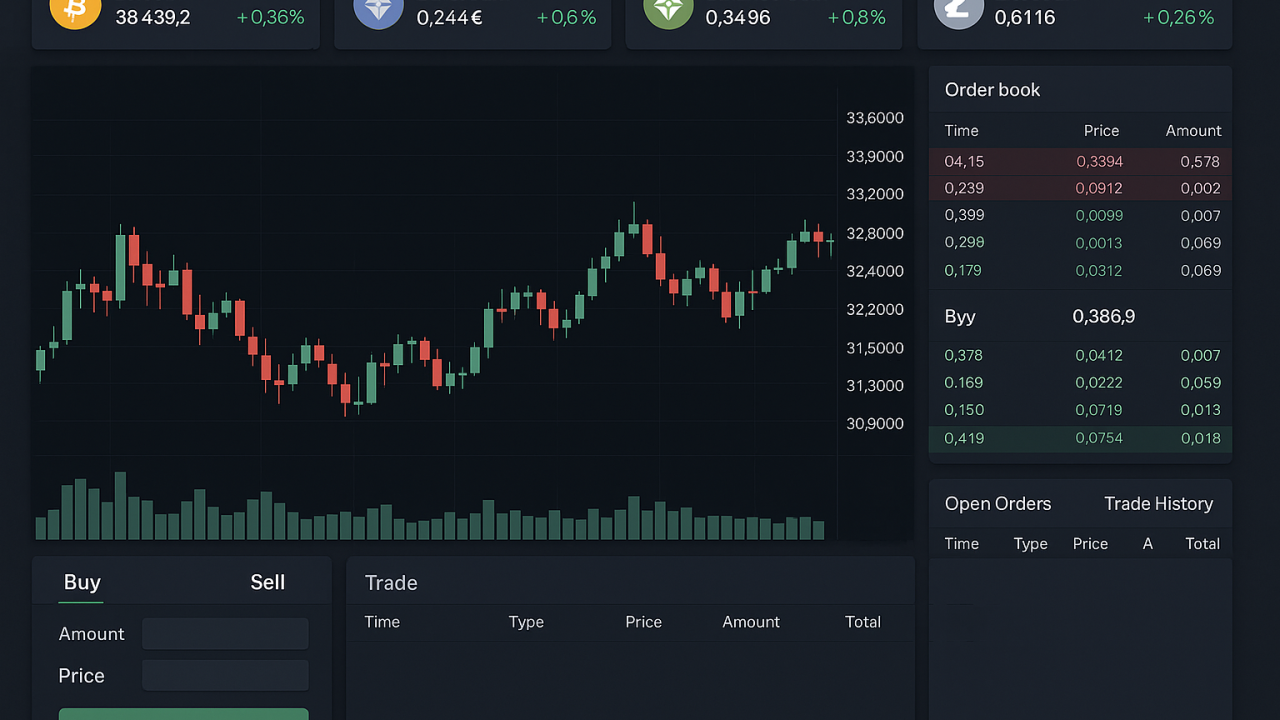
Trading synthetic stocks on perpetual decentralized exchanges (Perp DEXs) has rapidly evolved into one of the most dynamic frontiers in DeFi. In 2025, traders can access blue-chip equities, tech giants, and global indices 24/7 – all without ever touching a traditional brokerage or owning the underlying shares. This guide breaks down how you can harness the power of perpetual contracts and synthetic assets to trade tokenized stocks with leverage, transparency, and full self-custody.

Why Synthetic Stocks on Perp DEXs Are Gaining Traction
Synthetic stocks are blockchain-based tokens that mirror the price action of traditional equities such as Apple (AAPL), Tesla (TSLA), or even entire indices like the S and P 500. Instead of holding actual shares, you gain exposure to their price movements through perpetual contracts – derivatives that never expire and allow for continuous long or short positions.
What’s driving adoption? In 2025, top Perp DEXs like dYdX, GMX, and Synthetix have combined deep liquidity with robust security and multi-collateral options. The result: daily trading volume for decentralized perpetual markets soared past $96.973 billion by September, reflecting both retail and institutional confidence in on-chain derivatives.
This new landscape is ideal for traders who want:
- Global access: No geographic restrictions or KYC barriers
- 24/7 trading: Markets never close; react instantly to news
- Leverage: Amplify positions up to 100x (with risk)
- Diversification: Trade both crypto and equity perps from one wallet
If you want a deeper dive into how these assets work under the hood, check out our explainer: How Synthetic Perp Stocks Work: Accessing U. S. Equities from DeFi via Perp DEXs.
The Leading Platforms for Synthetic Stock Trading in 2025
The competition among Perp DEXs has yielded feature-rich platforms tailored for synthetic equity trading. Here’s a pragmatic look at three market leaders:
- dYdX: Now running on its own Cosmos-based chain, dYdX offers up to 50x leverage across more than 220 markets. StarkWare Layer-2 integration keeps fees low and transactions fast – critical for active traders.
- GMX: Built atop Arbitrum and Avalanche, GMX enables up to 100x leverage with deep GLP-backed liquidity pools for minimal slippage. Its transparent fee structure appeals to high-frequency participants.
- Synthetix: Recently launched its Ethereum-based perpetual DEX using a hybrid on/off-chain model. Traders benefit from gasless transactions and can post margin in multiple assets like wstETH or cbBTC – no need to liquidate core holdings just to participate.
If you’re comparing features across platforms or deciding where to start, our comprehensive breakdown is worth bookmarking: Top Perpetual DEXs for Synthetic Stocks Trading in 2025: Comparison and Analysis.
A Step-by-Step Guide: Getting Started with Synthetic Stock Perps
The process of trading synthetic stocks via perpetual contracts is streamlined compared to legacy systems but still requires attention to detail at every step. Here’s what you need to do:
- Select Your Platform: Evaluate based on leverage options, supported assets, collateral flexibility, user interface quality, and fee transparency.
- Create/Fund Your Wallet: Use a non-custodial wallet like MetaMask or WalletConnect compatible with your chosen chain (Ethereum L2s, Cosmos appchains). Fund it with collateral such as USDC, ETH, or supported wrapped tokens.
- Connect and Deposit Collateral: Link your wallet to the DEX interface; deposit your chosen collateral into your margin account. Some platforms now support multi-collateral margin so you don’t need to sell other assets just to participate.
- Select Asset and Leverage Level: Choose from available synthetic equities (e. g. , TSLA-PERP) and set your desired leverage – but remember higher leverage increases liquidation risk substantially.
- Place Your Trade and Manage Risk: Execute long or short orders based on your analysis; set stop-losses where possible and monitor positions closely since these markets run non-stop.
If you want detailed walkthroughs with screenshots for each step above (including tips for managing gas fees), see our practical guide here: How To Trade Synthetic Perp Stocks On Decentralized Exchanges: A Step-by-Step Guide.
While the mechanics of trading synthetic stocks on Perp DEXs are increasingly user-friendly, success hinges on disciplined risk management and a keen awareness of platform-specific nuances. Below, we’ll dig into advanced strategies, highlight common pitfalls, and address the most pressing questions for traders eyeing synthetic equities in 2025.
Advanced Tips: Risk Management and Strategy
With leverage up to 100x now commonplace, prudent risk controls are non-negotiable. Here’s how experienced traders navigate the landscape:
- Position Sizing: Never risk more than 1-2% of your trading capital per position. Volatility in synthetic assets can spike unexpectedly, especially around macro events or earnings releases.
- Stop-Loss Discipline: Always use stop-loss orders where supported. On platforms like GMX and dYdX, you can automate exits to prevent emotional trades during market whipsaws.
- Diversification: Don’t over-concentrate on a single synthetic equity. Mix exposure across sectors or indices to mitigate idiosyncratic risk.
- Understand Liquidation Mechanics: Each DEX has its own liquidation thresholds and penalty structures. Study them closely, unexpected liquidations due to oracle spikes or liquidity crunches remain a top risk in DeFi derivatives.
If you’re new to these strategies or want a checklist before placing your first trade, use the following resource:
Comparing Perp DEXs: Security, Fees, and User Experience
The best platform for you will depend on your priorities. For example, dYdX’s Cosmos-based chain offers high throughput with robust security audits; GMX’s GLP pool is praised for deep liquidity and transparency; Synthetix brings multi-collateral flexibility and gasless trades via Ethereum L2s. Compare not just leverage but also insurance funds, incident history (such as GMX’s $42 million exploit), and community governance models.
If you want an at-a-glance comparison of leading platforms’ fees, supported stocks, and unique features, this resource is invaluable: Top Perpetual DEXs for Synthetic Stocks Trading in 2025: Comparison and Analysis.
The Human Factor: Behavioral Pitfalls
The always-on nature of DeFi markets is both a blessing and a curse. Overtrading, driven by FOMO or revenge trades after losses, can erode gains rapidly. Set clear rules for when to step away from the screen. Automation tools like limit orders or third-party bots can help enforce discipline, but ultimately your mindset is the final guardrail.
Frequently Asked Questions About Synthetic Stock Trading on Perp DEXs
Navigating the Future of Synthetic Equities
Synthetic stock perps have opened access to global equities with unprecedented flexibility, but with that freedom comes responsibility. As DeFi protocols mature through innovations like hybrid off-chain/on-chain execution (see Synthetix), expect tighter spreads and deeper order books rivaling centralized exchanges by late 2025.
If you’re ready to take your strategy further or want sector-specific insights (such as trading FAANG synthetics versus broad index perps), our deep dives can help refine your edge: Synthetic Perp Stocks: How to Trade TSLA, AAPL and More With Leverage on DEXs.
Ultimately, success in this space comes down to adaptability, embracing new tools while never losing sight of core risk principles. The landscape will keep evolving; those who combine curiosity with caution will be best positioned as perpetual DEX innovation accelerates into 2026.






